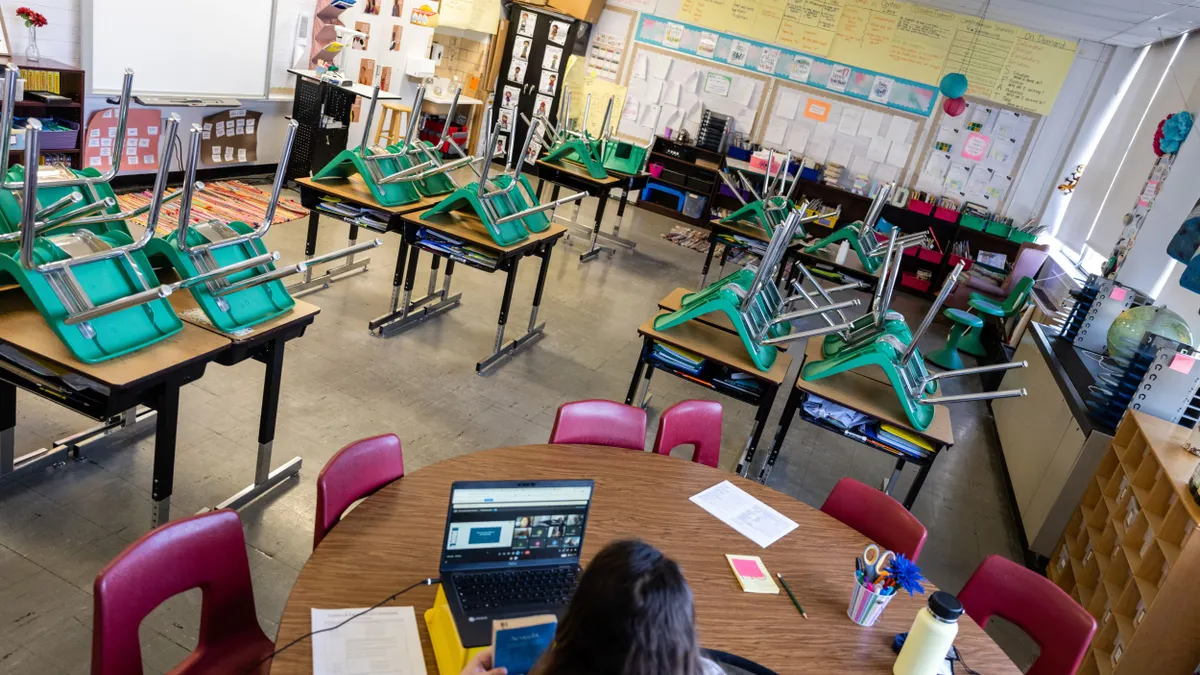Tennessee school boards will have only a few months to assemble and approve policies for artificial intelligence use under a law signed by Gov. Bill Lee in March.
On top of that challenge, the Tennessee Department of Education has not released any recommendations for districts to consider while developing these policies. Nationally, at least seven states have released guidance on using AI in K-12 settings as of late February.
It’s likely, however, that a majority of Tennessee's school districts will initially rely on a model policy to be developed by the Tennessee School Boards Association that will meet the minimum requirements of the law, said Jonathan Criswell, superintendent at the Milan Special School District in Tennessee.
The state's Oak Ridge Schools has been working since last fall to create its own district procedures on AI use with the help of a committee of teachers and administrators represented across grade levels, said Molly Gallagher Smith, the district’s communications specialist.
The 5,000-student district has already drafted the document and will wait for guidance from the Tennessee School Boards Association before asking its school board to adopt a formal policy.
Oak Ridge was excited to see legislation enacted requiring Tennessee districts to develop AI policies, because it’s important for school leaders to start these necessary conversations on appropriate use of the technology, Gallagher Smith said. But, she added, there should be a longer time period for school districts to develop a policy.
As the clock continues to tick for schools across the state to quickly adopt a policy and report it to the Tennessee Department of Education by July 1, officials from Milan and Oak Ridge shared how they’re navigating their approaches to AI use as the deadline approaches.
Oak Ridge Schools
The committee exploring AI use at Oak Ridge Schools has met several times since the fall, said Heather Henderlight, the district’s instructional technology coach. The committee has actively sought teacher input regarding the use of AI plagiarism detection software and the difference between responsible AI use and cheating.
Another issue proving a bit challenging for the committee members is how to protect student data while using AI tools, Henderlight said. The district is always looking for guidance on student data privacy, and it would be beneficial to get more advice from state officials on this issue, she said.
Oak Ridge Schools is also weighing whether or not to purchase an AI tool that can be used districtwide among teachers in addition to students, potentially, for the next school year. Offering such AI platforms to all, especially at the student-level, could help address equity concerns over access to technology, Henderlight said.
The committee is also thinking through the technology’s shortcomings, including inequities and embedded biases, Henderlight said. That same issue also raises the importance of exploring instruction on AI literacy.
Part of Oak Ridge Schools’ soon-to-be-proposed AI procedures could also include integrating professional development for teachers during the first year it’s implemented. This is a crucial step, Henderlight said, because the district wants teachers to feel confident that schools have invested in the best AI platforms with the strongest guardrails in place.
Since there isn’t any available guidance from Tennessee officials on AI use in schools, Henderlight said, Oak Ridge has looked to other states’ guidance, including North Carolina, when developing its AI procedures. She suggested Tennessee districts that haven’t started to consider their policy should also look into what other districts and states are doing.
Milan Special School District
Milan Special School District will begin to develop its AI guidance by building off the basic model policy from the Tennessee School Boards Association, Criswell said.
Like Oak Ridge Schools, Criswell’s 2,000-student district is debating how to best outline for teachers, students and parents what is considered plagiarism when using AI. It’s possible that kind of specific guidance could make it into district policy next year, he added.
Problems have risen in the past when teachers at Milan Special School District have used AI detectors to evaluate students’ reliance on AI for school work, Criswell said. There have been cases where teachers have found an extremely high rate of plagiarism using AI, and the district is still trying to find ways to hold accountability conversations with students and parents.
“Sitting down and having those conversations with parents has been very difficult, because first, a majority of them don’t even know that this exists,” Criswell said. “We’re really making sure that we keep student work that says, ‘Here was a student’s work six months ago, here it was three months ago, here it is now. OK, this is vastly different than what you produced three months ago, so now let’s have that conversation.’”
A crucial part for any district’s approach to an AI policy is to ask both teachers and students about their experiences with the technology so far, Criswell said.
Without official guidance from the state, Criswell said, his leadership team has looked to other districts and states for advice. It also helps to reach out to district leaders across the nation who are already doing this work well “so that we’re not waiting,” he said.




















